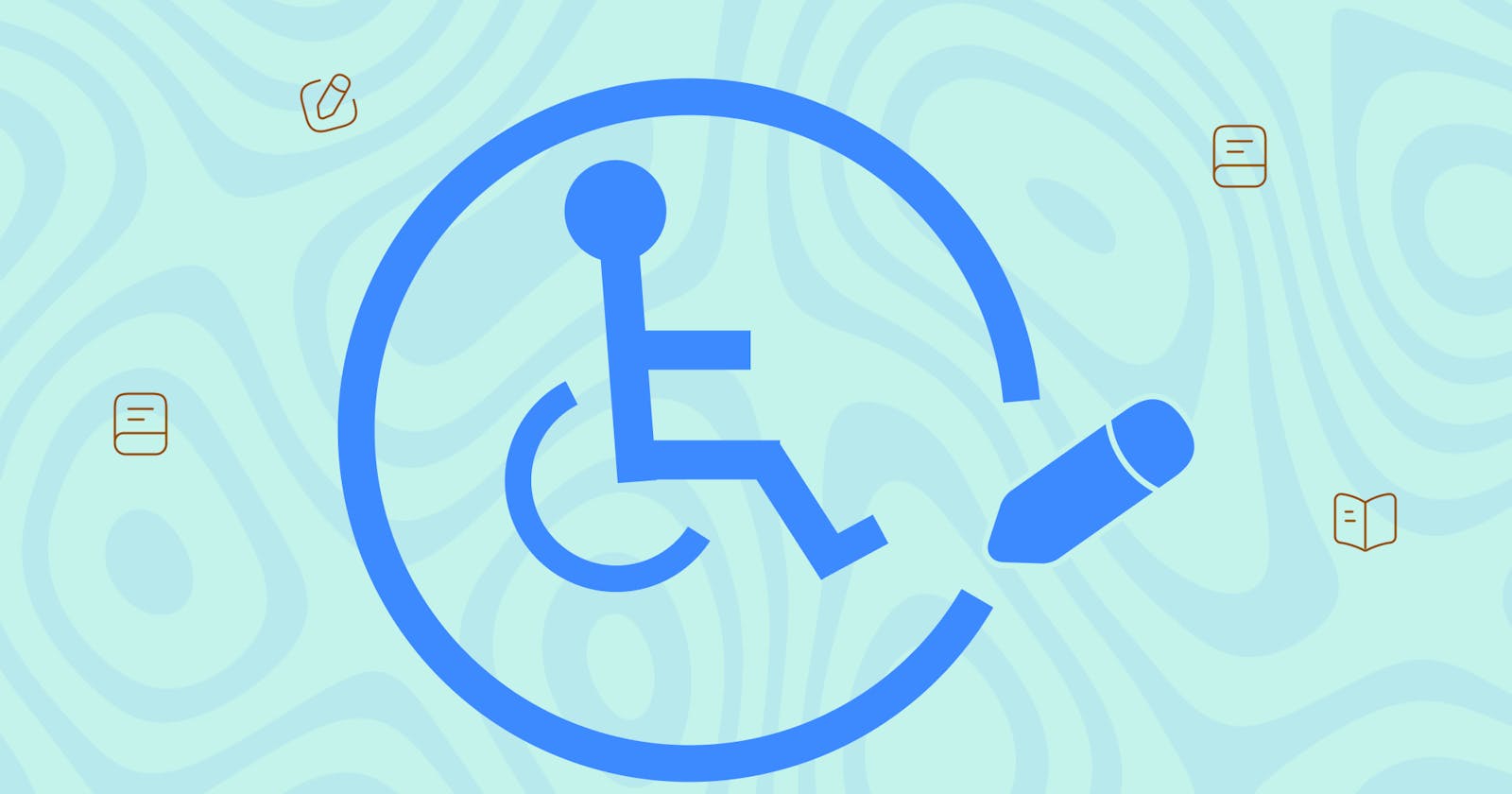Creating content through writing has become a popular way to share important information and another way people enjoy leisure. A chunk load of people consume written content and this doesn’t exempt users with disabilities. Therefore, this raises the discussion that accessibility in content creation, especially written content should be seen as indispensable.
What is Accessibility
Accessibility in the digital system should not be overlooked. This is because about a billion users have at least one disability. and they should not be left out while the world progresses in technology. Digital Content writing is a progress in technology. Accessibility removes obstacles that limit users, especially users with disabilities. It means ease of access for users with limited abilities, allowing them to enjoy the benefits of life and work without challenges.
Designers and Developers implement accessibility while building products. However, they are not the only ones responsible for creating an accessible environment. Content creators and writers play their part as well. These creatives should consider readers with disabilities while creating content. In the course of this article, we will learn how accessibility can be implemented in content creation.
Content Creators and Authoring tools
Creatives who put out content use different kinds of authoring tools for their works. The accessibility of the authoring tools plays a major role in determining the accessibility of their work and this can influence the creator’s work. However, learning the importance of implementing accessibility in write-ups can help creatives choose good authoring tools. Learning how to use these tools in putting out accessible content is also a major step to creating accessibility.
Authoring tools are software used to create digital content. They are usually in the form of hypertext or multimedia. This means they are used for written content, audio, or visuals(images, videos, animations, etc.) and they can be made for different purposes. These tools are either cloud-based (used online) or desktop-based.
Some examples of authoring tools include;
Google Docs
YouTube
design tools
photo editing tools
drop paper box
Medium, Hash Node
writing apps, etc.
Content creators could also use social media apps to write content. Content writers need to learn to use authoring tools properly to create good content. They also need to implement some accessibility principles to put out great work.
How to implement Accessibility in Content writing
Use Headings
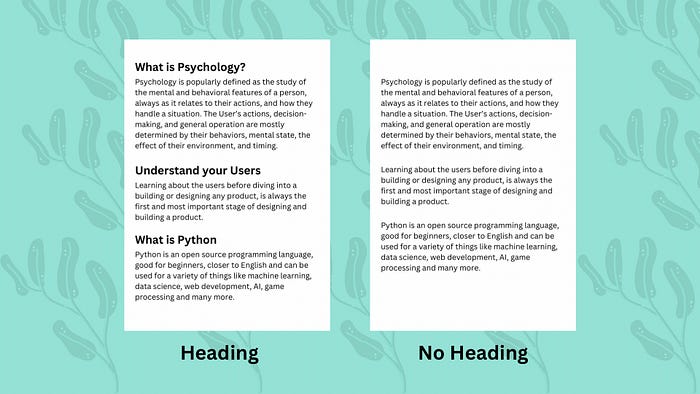
Headings group content into sections. They give the content a good structure and the structure makes the writeup meaningful. They provide the reader with an outline to navigate the content. Heading formats make reading easier and help to reduce cognitive load. Headings are used in order. H1-H5 to signify hierarchy and level of importance. H1 is to be used only for the title or main topic of discussion.
Make text readable
When writing content, especially for educational purposes, words should not be ambiguous, Idioms and abbreviations are to be explained, and less use of professional jargon. Acronyms used for the first are to be expanded and acronyms in brackets. This is recommended to reduce the cognitive load the user experiences while trying to expand the words.
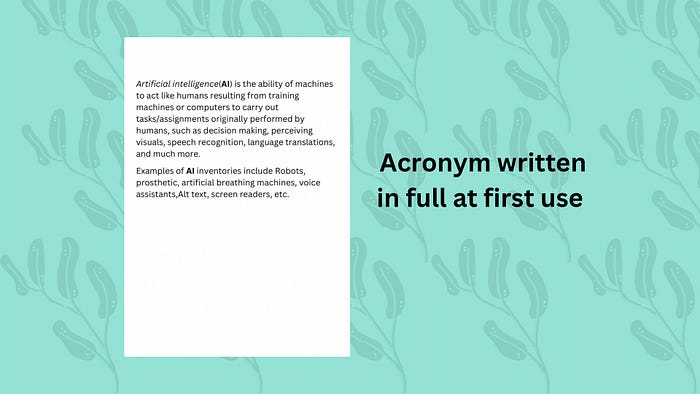
Use the simplest form of the language while writing. If there is a need for a complex word, it should be explained either by providing a link that directs readers to its definition or it can be elaborated within the writing. The provided links should be void of ambiguous instructions such as, ‘click here ‘ or ‘read more’. The provided links should indicate the exact explanation of complex words. They should also show the document type and/or mention whether they will take them to another website.
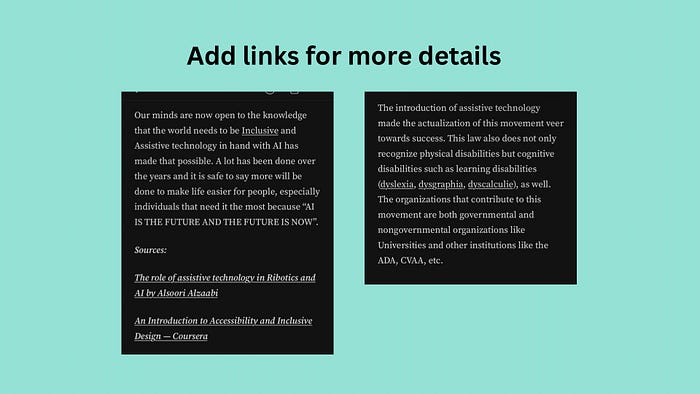
When using tables, arrange them in a way that reduces the confusion of the readers. It should be compatible with the authoring tool, this means that the arrangement of the table should be readable to a user using a screen reader or a text-to-read device.
Resize text
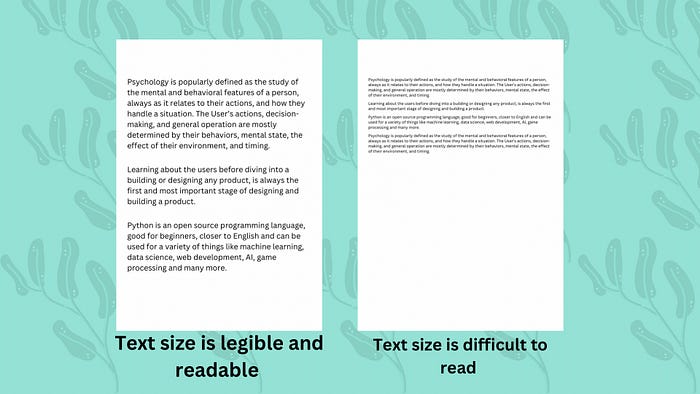
Text resize is only applicable where the authoring tool gives room for text adjustments. The text sizes for the contents should be readable and accommodate users who have visual disabilities.
Good contrast
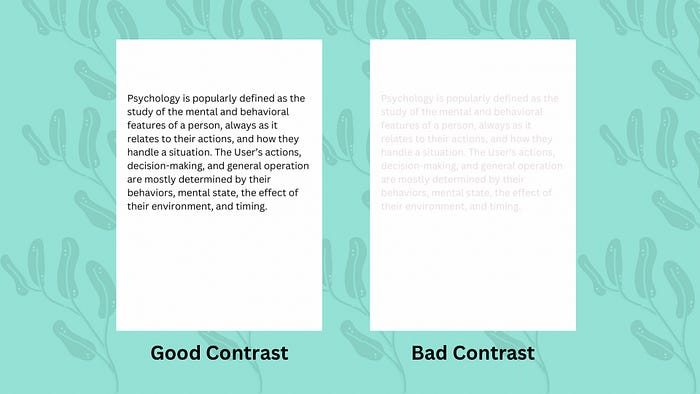
This also applies when the authoring tool allows for it. Consider contrasts in cases where the content writer wants to use color to indicate hierarchy and importance. Colors that complement the background and are visible should be used to enable users with visual impairments like color blindness, night blindness, etc.
Closed captions and Transcripts
Closed captions should be provided when videos are used. This is mostly the job of authoring tools to implement this. However, in cases where creatives are meant to provide the content needed for the close captions, it should be considered.
Clear and Concise Writeups
A good percentage of the world’s population have cognitive disabilities and this can affect their reading. To help these users, the contents are best written in small chunks or paragraphs. This makes write-ups easier to read for everyone, especially users with cognitive disabilities.
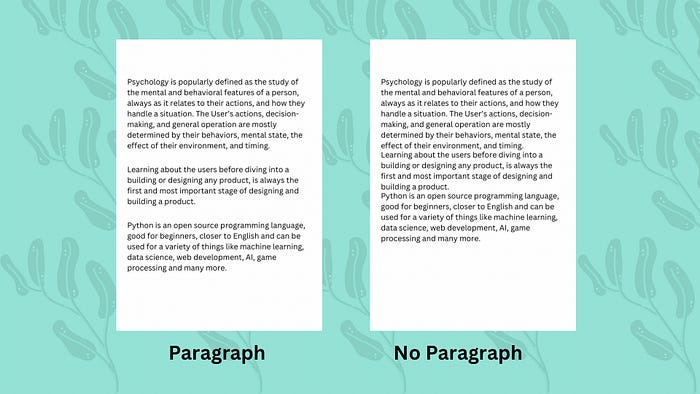
Lists are used to highlight points. Pictures, videos, and graphical illustrations can also be used to ensure clarity. In cases where contents are UX copies or guides, clear instructions that are easy to understand with fewer technicalities should be provided.
Alt text
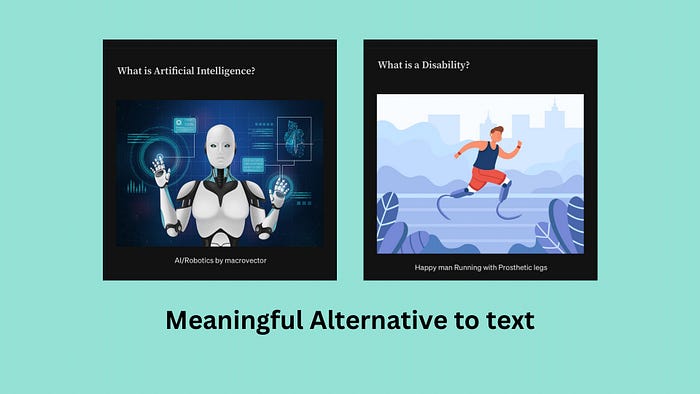
When images and pictures are used, text alternatives(Alt text) should be provided. The Alt texts provided should also be meaningful and properly explain the images they represent. Most authoring tools like Google Docs and even social media apps such as Twitter, Instagram, etc. have given room for alt texts so taking out time to provide these texts while creating content is one way to implement accessibility.
Why Implement Accessibility in Content Writing
There are benefits to implementing accessibility in content writing. Some of the reasons accessibility in content writing is indispensable are summarized into three main points;
1. Curb cut effect: This explains that when accessibility features are implemented, it benefits users with disabilities and the general public in the long run. This is because it aids users who not only have permanent disabilities but temporary and situational disabilities as well.
2. Moral: About 2 billion people in the world have one disability or the other. it is morally right that they are not omitted while building digital products or creating content because that will be a reasonable percentage of the people that have been ignored. The web should be inclusive and accommodating to all users.
3. Business /Brand growth: Creatives aim to make a difference with their brand and make good returns on investment. Implementing accessibility can make that goal a success. A brand that accommodates different demographics of users, regardless of their abilities, has more engagement and growth. When the brand grows, the business thrives, and returns on investment are significant.
Implementing accessibility as a creative in content writing benefit users with disabilities, it also benefits everyone because It makes the work easier to understand and enjoyable. When users in all demographics are considered, the purpose of teaching, Informing, or entertaining is realized when users in all demographics are considered before content is written. Additionally, content writers looking to grow their brands and get better business engagement should see inclusion and accessibility as an essential aspect of content writing.
Resources: WCAG 2.1 Guidelines

